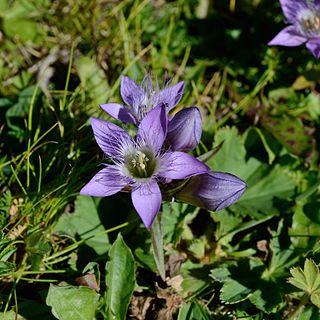
Gentianella germanica, common name German gentian, also known in the United Kingdom as the Chiltern gentian, is a flowering plant in the family Gentianaceae. It was chosen as the county flower of Buckinghamshire. Within the UK, it is only native to the Chiltern Hills of southern England, although its distribution in continental Europe is much wider, ranging from France to the Balkans.
East Polden Grasslands is a 124 hectare biological Site of Special Scientific Interest on the Polden Hills in Somerset, notified in 1999.
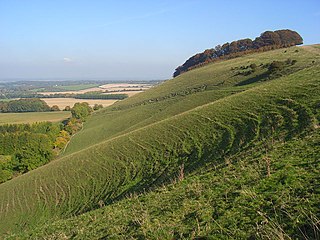
Ham Hill is a hill and area of chalk downland in Wiltshire, England, on the steep banks running alongside the road from the village of Ham to Buttermere, close to the Berkshire border. A biological Site of Special Scientific Interest, notified in 1971, covers 1.5 hectares of the site; this designation is due to the site's species-rich plant and insect communities, which include some rare species. Notable among these is the musk orchid, which has been confirmed at only one other site in Wiltshire.

Whitevine Meadows is a 13.0 hectare biological Site of Special Scientific Interest east of North and South Perrott in Somerset, notified in 1979.
NVC community CG2 is one of the calcicolous grassland communities in the British National Vegetation Classification system. It is one of three short-sward communities associated with heavy grazing, within the lowland calcicolous grassland group, and is regarded as "typical" chalk grassland.

Gentianella quinquefolia, commonly called agueweed, is a flowering plant in the gentian family. It is native to eastern North America.

Gentianella is a plant genus in the gentian family (Gentianaceae). Plants of this genus are known commonly as dwarf gentians.
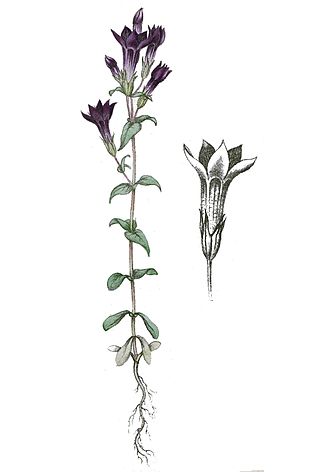
Gentianella amarella, the autumn gentian, autumn dwarf gentian, or autumn felwort, is a short biennial plant flowering plant in the gentian family, Gentianaceae. It is found throughout Northern Europe, the western and northern United States, and Canada.

Gentianopsis is a genus of flowering plants in the gentian family known commonly as fringed gentians. These are similar to the gentians of genus Gentiana. Most have flowers which are blue to purple in color. They may be annual or perennial. They are native to Eurasia and temperate North America.
A gentian is a plant that has terminal tubular flowers.

Stenoptilia zophodactylus, also known as the dowdy plume, is a species of moth of the family Pterophoridae found worldwide. It was first described by Philogène Auguste Joseph Duponchel in 1840.

Pittington Hill is a Site of Special Scientific Interest in County Durham, England. It lies adjacent to the village of Pittington, some 6 km north-east of Durham city. A disused quarry occupies part of the site.

Gentianella campestris, common name field gentian, is a small herbaceous biennial flowering plant in the Gentianaceae native to Europe. Its bluish-purple flowers contain four petals.
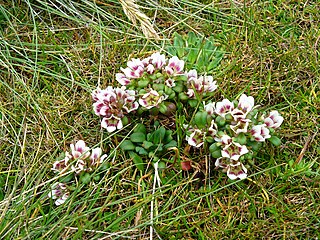
Gentianella concinna is a flowering plant species, endemic to the Auckland Islands of New Zealand.

Gentianella barringtonensis, the Barrington snow gentian, is a species of the genus Gentianella native to New South Wales, Australia.

Gentianella anglica, the early gentian, is a species of flowering plant in the genus Gentianella, native to Great Britain. Gentianella anglica is endemic to Great Britain and its centre of distribution is in Dorset, Wiltshire, and the Isle of Wight.
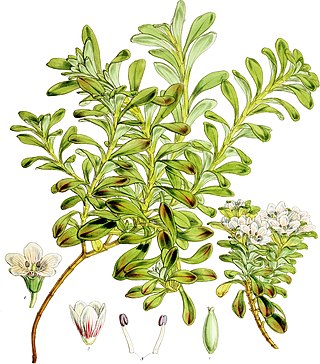
Gentianella cerina is a plant species in the Gentianaceae family, endemic to the Auckland Islands of New Zealand.

Gentianella praecox, the Bohemian gentian, is a flowering plant species belonging to the genus Gentianella in the family Gentianaceae. Its distribution is limited to the territory of the Bohemian Massif.















